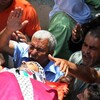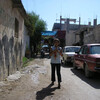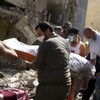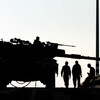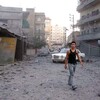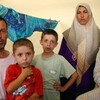
Words Fail as the Bombs Fall
Beirut 10 August 2006
I haven’t been able to write. Words irritate me these days. Words distorted and twisted by power, words re-used by journalists and analysts like parrots. A country waging a war becomes a country under siege, resistance groups become terrorists. I do not want to use the language the new rulers of the world are using. I get irritated listening to myself uttering a single word they use. I haven’t been able to write also because words fail. I sat yesterday in front of the TV set, watching a broadcast about the Shayyah massacre where 43 people died. It is at the funeral; there are interviews with bereaved mothers. Read more about Words Fail as the Bombs Fall


